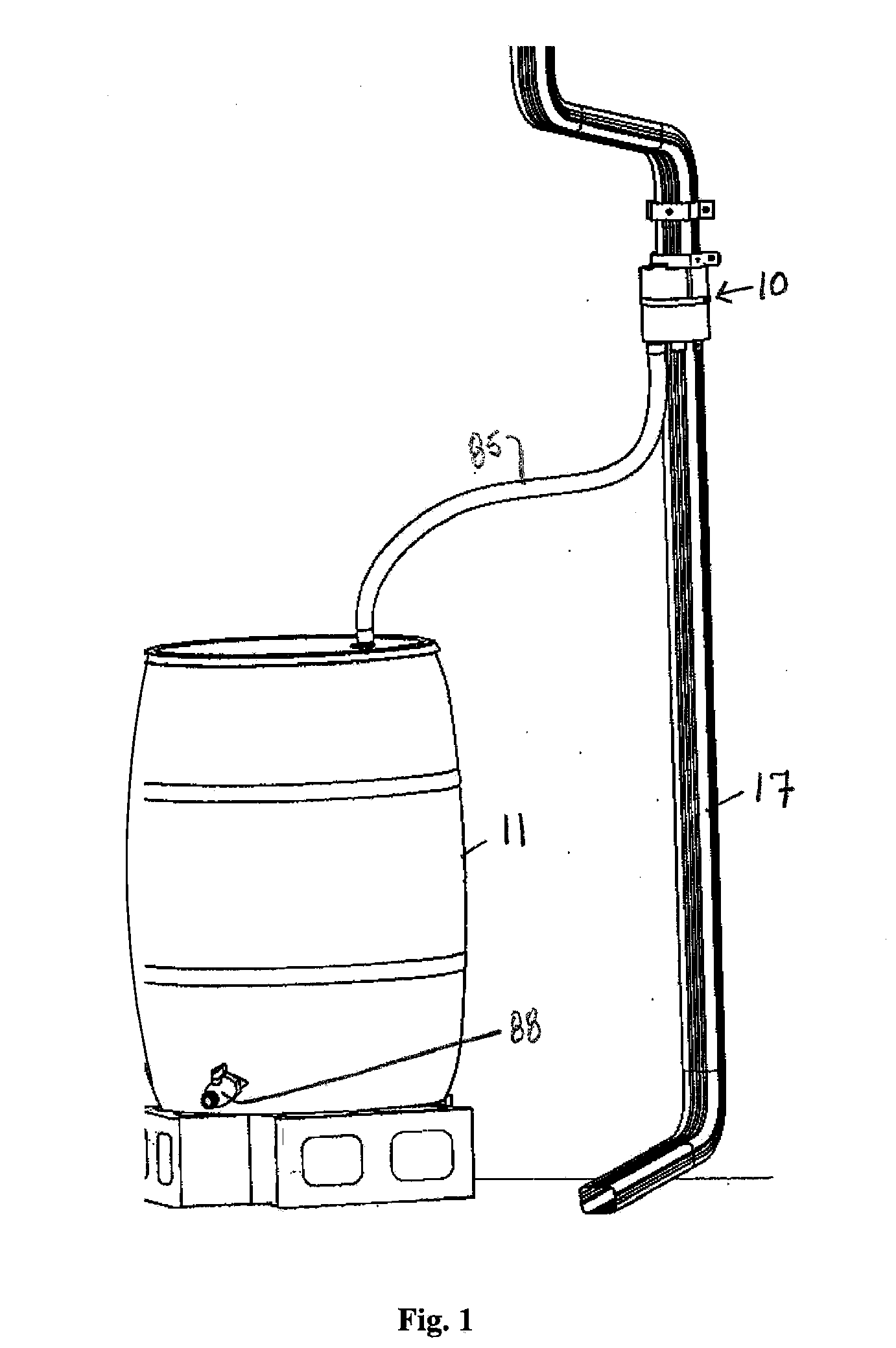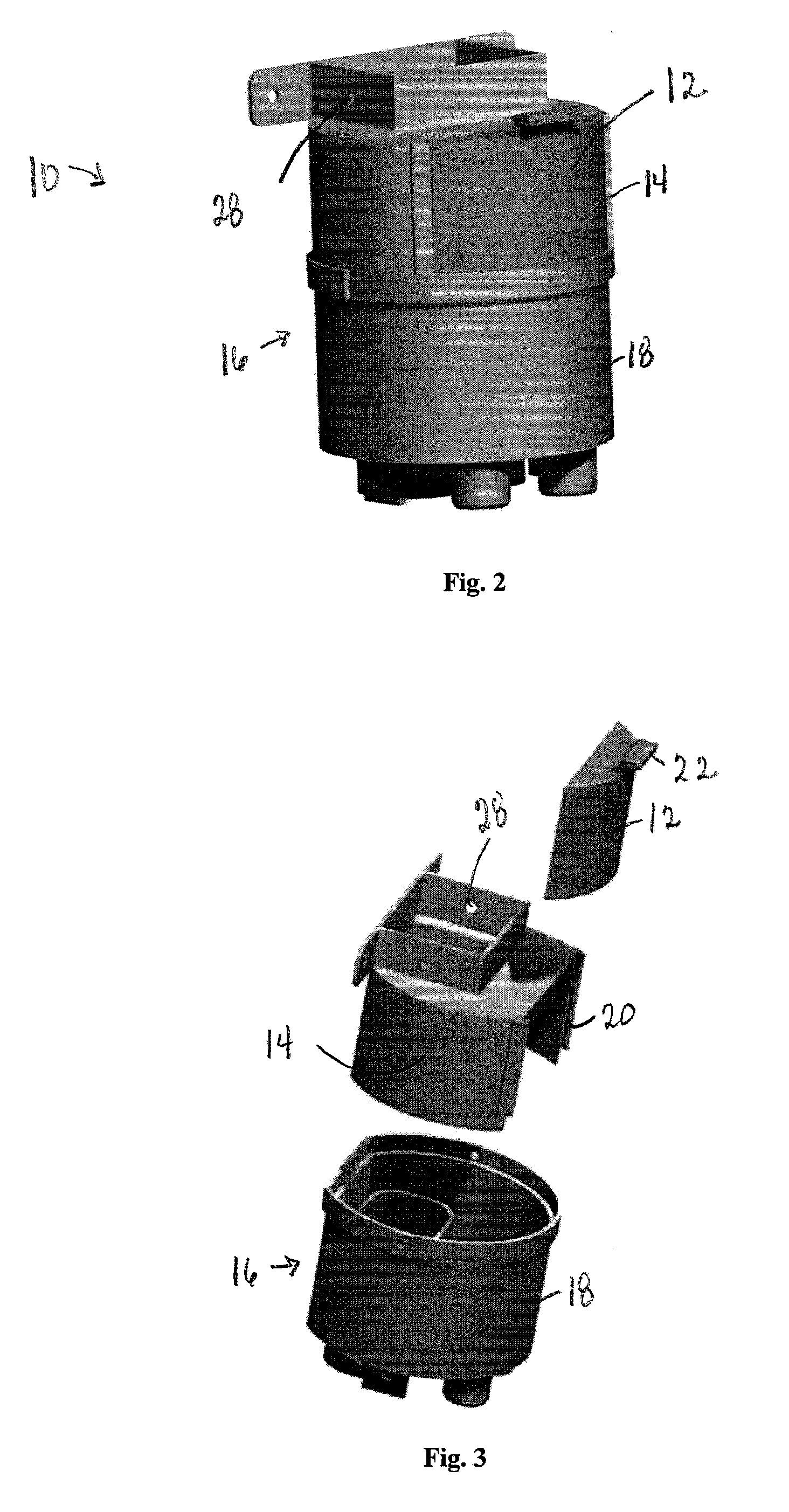Rain water diverter
a technology of rainwater and sluice valve, which is applied in the direction of roof drainage, mechanical equipment, transportation and packaging, etc., can solve the problems of water being used for consumption, water being scarce for a long time, and water being used for watering. and other problems, to achieve the effect of reducing the amount of debris in the rainwater exiting the first outlet with surface tension and surface area
- Summary
- Abstract
- Description
- Claims
- Application Information
AI Technical Summary
Problems solved by technology
Method used
Image
Examples
Embodiment Construction
Construction and Operation of Embodiments of the Invention
[0026]Referring initially to FIG. 1, in at least one embodiment, a diverter 10 is fluidically coupled to a container 11 for holding collected rain water that is diverted to it from a downspout 17. Referring now to FIGS. 2-7, an embodiment of a diverter 10 includes a housing 16 and a door 12, an upper portion 14 of the housing 16, and a lower portion 18 of the housing 16. In one embodiment, the door 12 and the housing 16 are made from a corn-based plastic such as polylactic acid (PLA). In an embodiment, the door 12 and the housing 16 are made from a mixture of 49% PLA, 49% acrylic, and 2% color additives by weight. Mixing materials raises the heat deflection temperature of the PLA, to withstand high temperatures. The acrylic improves the surface finish, UV resistance, and strength of the final product. Additional materials can be used instead of, or in addition to the acrylic, such as polycarbonate,) and 2% color additives. Th...
PUM
 Login to View More
Login to View More Abstract
Description
Claims
Application Information
 Login to View More
Login to View More - R&D
- Intellectual Property
- Life Sciences
- Materials
- Tech Scout
- Unparalleled Data Quality
- Higher Quality Content
- 60% Fewer Hallucinations
Browse by: Latest US Patents, China's latest patents, Technical Efficacy Thesaurus, Application Domain, Technology Topic, Popular Technical Reports.
© 2025 PatSnap. All rights reserved.Legal|Privacy policy|Modern Slavery Act Transparency Statement|Sitemap|About US| Contact US: help@patsnap.com



